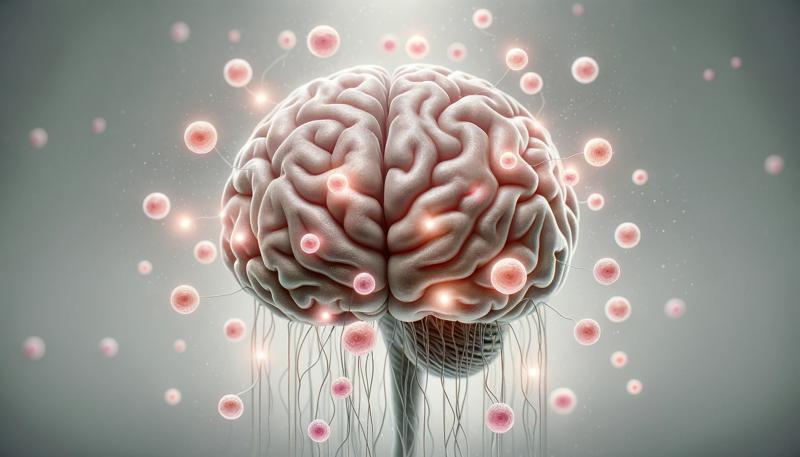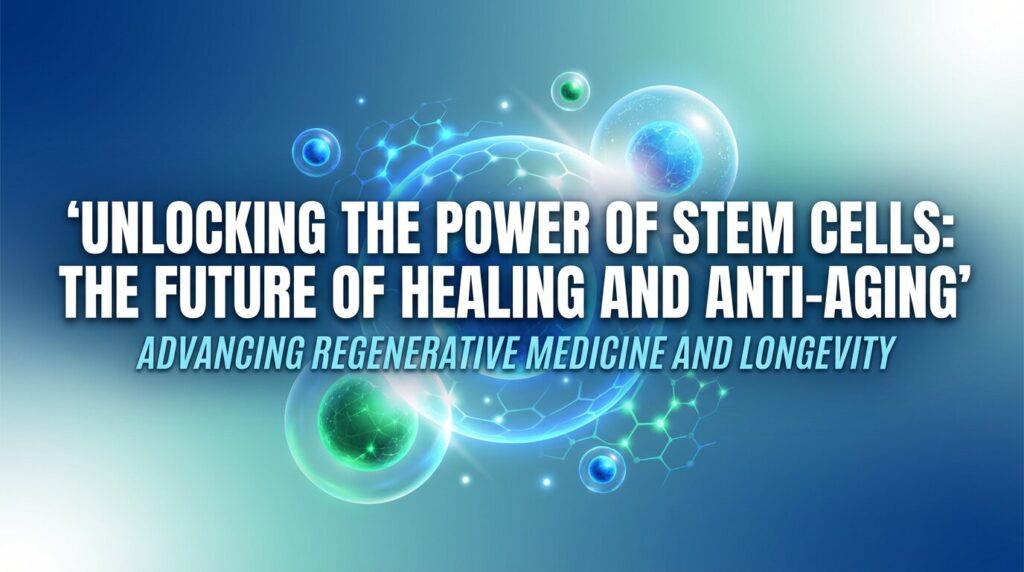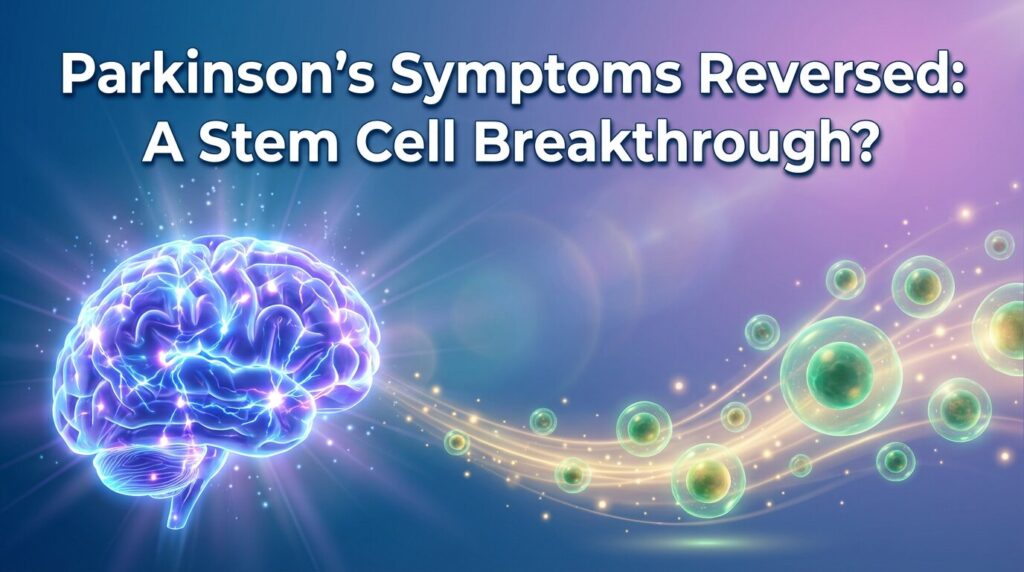In recent years, the scientific community has been abuzz with the potential of induced pluripotent stem cells (iPSCs) for treating a myriad of diseases, especially neurological disorders. The allure of iPSCs lies in their ability to morph into any cell type in the human body, a characteristic termed as pluripotency. This remarkable trait is achieved through the reprogramming of somatic cells—ordinary cells like skin or blood cells—into a stem cell state. This technology bridges the gap between the promise of regenerative medicine and the ethical concerns surrounding the use of embryonic stem cells.
Defining Induced Pluripotent Stem Cells (iPSCs)
The induction of pluripotent stem cells is akin to turning back the clock on a cell’s identity, reprogramming it to a state where it can then be guided to become any cell in the body. This process transforms a specialized somatic cell into a state of pluripotency, through a process that overwrites the cell’s original programming with that of a stem cell. The resulting iPSCs then have the ability to differentiate into any cell type, providing a limitless supply of cells for therapy and research.
The Landscape of Neurological Disorders
Neurological disorders, encompassing conditions like Parkinson’s Disease, Alzheimer’s Disease, and Amyotrophic Lateral Sclerosis (ALS), are a group of ailments that impair the brain and the central nervous system. The treatment of these disorders has long been a medical challenge, given the complexity of the nervous system and the lack of effective therapies. Current treatment modalities often fall short in providing a cure or even significant symptom relief.
The Promise of Stem Cell Therapy
Enter stem cell therapy, a beacon of hope in the bleak landscape of neurological disease treatment. The core of this promise lies in the regenerative capacity of stem cells, which can replace damaged or degenerated neurons. Particularly, iPSCs stand out due to their ethical acceptability and unlimited supply, as compared to embryonic stem cells.
Moreover, the patient-specific iPSCs provide a platform for personalized medicine. By utilizing a patient’s own cells, therapies can be tailored to provide the most effective treatment with the least risk of immune rejection.
Furthermore, the use of iPSCs in disease modeling has been revolutionary. They provide a model system to study the underpinnings of neurological disease, test new drugs, and understand the mechanisms of disease progression.
In summary, the advent of iPSC technology is a game changer in the realm of neurological disease treatment. Through the generation of induced pluripotent stem cells, the field of regenerative medicine is burgeoning with possibilities, inching closer towards providing viable therapy options for those afflicted with neurological disorders. As we delve deeper in the subsequent sections, the multifaceted applications and the transformative potential of iPSCs will be further elucidated.
Historical Development
The journey of induced pluripotent stem cells (iPSCs) from a concept to a potentially transformative therapeutic tool is a testament to the rapid pace of advancement in the field of stem cell research.
Timeline of Key Discoveries in iPSC Technology
The inception of iPSC technology traces back to 2006 when Shinya Yamanaka and his team pioneered the reprogramming of somatic cells into pluripotent stem cells. This was achieved by introducing four specific genes into the DNA of the cells, effectively erasing their specialized identities and reverting them to a stem cell-like state. The timeline of advancements in iPSCs is a continuum, with each breakthrough bringing us closer to the realization of their therapeutic potential.
| Year | Discovery |
|---|---|
| 2006 | Induction of pluripotent stem cells from mouse embryonic fibroblasts |
| 2007 | Generation of iPSCs from human somatic cells |
| 2008 | Demonstration of the therapeutic potential of iPSCs in a mouse model of sickle cell anemia |
| 2010 | First human trial proposed using iPSCs derived retinal cells for age-related macular degeneration |
| 2012 | Establishment of protocols for the efficient generation of iPSCs |
Evolution of iPSC Application in Neurological Disorder Research
With the establishment of iPSC technology, the gateways to understanding and treating neurological diseases were flung wide open. Initially, iPSCs were utilized primarily as disease models. They provided a platform to delve into the molecular intricacies of neurological diseases, something that was largely elusive before. The models created using iPSCs derived from patients with specific neurological disorders enabled researchers to observe the disease progression in a petri dish, providing invaluable insights into the disease mechanisms.
As the technology matured, the application of iPSCs transcended beyond modeling to drug discovery and therapy. Scientists began to harness iPSCs for drug screening, identifying compounds that could potentially halt or reverse disease progression. Moreover, the potential of iPSCs in cell replacement therapies started to come into focus. Through the differentiation of iPSCs into the desired cell types, like motor neurons or dopaminergic neurons, the vision of replacing degenerated neurons in conditions like Parkinson’s Disease or Amyotrophic Lateral Sclerosis (ALS) began to morph from a distant dream to a near-future reality.
The evolutionary trajectory of iPSC application in neurological disorder research is a narrative of relentless inquiry, innovation, and hope. It reflects the unyielding spirit of the scientific community in its pursuit to unlock the therapeutic potential of iPSCs to combat neurological diseases.
Mechanism of Action
The cornerstone of iPSCs utility in neurological disease treatment lies in their ability to differentiate into a myriad of neuronal cell types and their potential integration into existing neural networks.
Differentiation of iPSCs into Neuronal Cell Types
The ability to guide iPSCs into becoming specific cell types is akin to having a well-versed conductor leading a grand orchestra, where each musician represents a different cell type. Through a series of carefully orchestrated molecular cues, iPSCs can be coaxed to become neuronal progenitor cells, and subsequently, mature neurons of desired subtypes like motor neurons or dopaminergic neurons. This cellular alchemy holds the promise of replenishing the lost or damaged neurons in various neurological diseases.
Integration into Existing Neural Networks

However, the symphony of regenerative medicine doesn’t end at the creation of new neurons. For a meaningful restoration of function, these newly formed neurons need to integrate seamlessly into the existing neural circuits. This is akin to introducing new musicians into a well-rehearsed orchestra – the transition has to be flawless for the melody to remain harmonious. The challenges are manifold, from ensuring the survival of transplanted cells to achieving functional integration. However, strides are being made to overcome these hurdles, inching us closer to viable iPSC-based therapies for neurological diseases.
The mechanism of action of iPSCs in neurological disorder treatment is a blend of precise cellular engineering and a deep understanding of neural biology. As we delve further, the multitude of avenues through which iPSCs are being utilized will be explored, underlining the transformative potential of this stem cell technology.
Current Applications
The current applications of induced pluripotent stem cells (iPSCs) in the domain of neurological disorders are vast and continue to expand with each passing day. They serve as indispensable tools in disease modeling, drug discovery, and are inching closer to becoming viable options for cell replacement therapy.
Research and Drug Discovery
Disease Modeling
The ability to create patient-specific iPSCs has revolutionized disease modeling. By reprogramming cells from patients with neurological disorders, researchers can generate models that recapitulate disease processes in a dish. This window into the cellular and molecular underpinnings of diseases like Parkinson’s and Alzheimer’s is invaluable. It not only facilitates a deeper understanding of these disorders but also provides a platform for testing potential treatments.
Drug Screening and Personalized Medicine
With the models generated using iPSCs, the landscape of drug discovery has been significantly enriched. Researchers can test the efficacy and safety of new drugs on these models, accelerating the process of drug development. Moreover, iPSCs are fostering the era of personalized medicine. By testing drugs on iPSC-derived neurons from individual patients, therapies can be tailored to provide maximal efficacy with minimal side effects.
Clinical Trials and Therapeutic Approaches
Current Status of Clinical Trials
The promise of iPSCs is gradually transitioning from bench to bedside. There are a growing number of clinical trials employing iPSCs in neurological disorder treatment. For instance, trials are underway to test the efficacy of iPSC-derived dopaminergic neurons in Parkinson’s Disease. Although in nascent stages, these trials are pivotal in evaluating the safety and efficacy of iPSC-based therapies.
Examples of Promising Therapeutic Approaches
Beyond clinical trials, there are several promising therapeutic strategies being explored. For example, the use of iPSC-derived motor neurons to replace the degenerated neurons in Amyotrophic Lateral Sclerosis (ALS) or spinal muscular atrophy patients. Additionally, iPSCs are being employed to generate supportive glial cells, which can protect and nourish neurons, offering another avenue for therapeutic intervention.
Ethical Considerations
The emergence of iPSC technology has not only propelled the field of regenerative medicine forward but also alleviated many ethical concerns associated with embryonic stem cell use.
Comparison with Embryonic Stem Cells
Unlike embryonic stem cells, iPSCs are generated without the destruction of embryos. This characteristic places iPSCs in a more favorable position ethically, making them a more publicly acceptable alternative for stem cell research and therapy.
Consent and Sourcing of Cells
The sourcing of somatic cells for iPSC generation is also less fraught with ethical dilemmas. With proper consent, cells can be easily obtained from individuals without harm or controversy. This advantage not only facilitates research but also underpins the potential of patient-specific therapies.
Future Directions
The horizon of iPSC technology in neurological disorder treatment is broad and full of promise.
Technological Advancements Facilitating iPSC-based Therapies
With the advent of newer technologies like CRISPR-Cas9 for precise gene editing, and advancements in cell sorting and cell culture techniques, the efficiency and safety of iPSC-based therapies are continually improving.
Potential New Treatment Paradigms
The fusion of iPSC technology with other emerging fields like gene therapy and nanotechnology could potentially herald new treatment paradigms. By overcoming current limitations and exploring novel therapeutic strategies, the potential to alleviate the suffering of millions afflicted with neurological disorders is within sight.
FAQ
Q: What is regenerative medicine?
A: Regenerative medicine is a branch of medicine that focuses on replacing, regenerating, or repairing damaged or diseased cells, tissues, or organs to restore normal function.
Q: What are induced pluripotent stem cells (iPSCs)?
A: Induced pluripotent stem cells (iPSCs) are a type of stem cell that can be generated from adult cells, such as skin cells, by introducing a specific set of genes. These cells have the ability to differentiate into different cell types of the body.
Q: How are iPSCs used in neurological disorder treatment?
A: iPSCs have the potential to be used as a model for studying neurological diseases, such as amyotrophic lateral sclerosis (ALS) or motor neuron disease. They can be differentiated into motor neurons, which are the cells primarily affected by these diseases. iPSCs can also be used for drug discovery and for developing personalized therapies.
Q: What is a disease model?
A: A disease model is a representation or simulation of a disease in a laboratory setting. iPSCs can be used to create disease models by differentiating them into specific cell types affected by a particular disease. These models help researchers understand the disease mechanisms and develop new treatment approaches.
Q: What is gene therapy?
A: Gene therapy is a treatment approach that involves introducing or modifying genes in a patient’s cells to correct or treat a genetic disease. iPSCs can be used in gene therapy by modifying their genes and differentiating them into the desired cell type for transplantation in patients.
Q: How are human iPSCs different from human embryonic stem cells (ESCs)?
A: Human iPSCs and human ESCs are both pluripotent stem cells, meaning they have the ability to differentiate into various cell types of the body. However, human iPSCs are generated from adult cells, while human ESCs are derived from embryos. The use of human iPSCs bypasses ethical concerns associated with the use of human embryos.
Q: What are the advantages of using iPSCs in neurological disorder treatment?
A: The use of iPSCs in neurological disorder treatment offers several advantages. These cells can be generated from adult patients, allowing for the creation of personalized therapies. iPSCs also provide a limitless source of cells for research and drug discovery, and they can be differentiated into the specific cell types affected by a particular disease.
Q: How are iPSCs used in cell-based therapies?
A: iPSCs can be differentiated into the desired cell type and then transplanted into patients as part of cell-based therapies. For example, iPSCs can be differentiated into motor neurons and transplanted into ALS patients to replace the damaged cells. This approach aims to restore normal function and slow down the progression of the disease.
Q: What are the challenges associated with using iPSCs in neurological disorder treatment?
A: One of the challenges is ensuring the safety and efficacy of the iPSC-derived cells. Researchers need to make sure that the iPSCs are fully differentiated into the desired cell type and that they do not form tumors or trigger an immune response when transplanted into a patient. Another challenge is optimizing the differentiation protocols to efficiently generate the desired cell type in large quantities.
Q: What is the current state of research on iPSCs in neurological disorder treatment?
A: The research on iPSCs in neurological disorder treatment is still in the early stages. Many studies have shown promise in using iPSCs as disease models and for drug discovery. However, more research is needed to fully understand the disease mechanisms and develop effective therapies. Clinical trials are also underway to evaluate the safety and efficacy of iPSC-based therapies in patients.
Conclusion
The journey of iPSCs from a groundbreaking discovery to a beacon of hope for neurological disorder treatment is a narrative of human ingenuity and relentless pursuit of knowledge.
The potential of induced pluripotent stem cells in deciphering the mysteries of neurological diseases and providing tangible therapeutic solutions is immense.
As we continue to traverse this uncharted territory, the promise of iPSCs beckons a new era of regenerative medicine where the dream of alleviating the suffering of individuals with neurological disorders may soon become a reality.
The continuous advancements in iPSC technology underscore the importance of sustained research efforts in this domain to fully realize the therapeutic potential that iPSCs hold.



